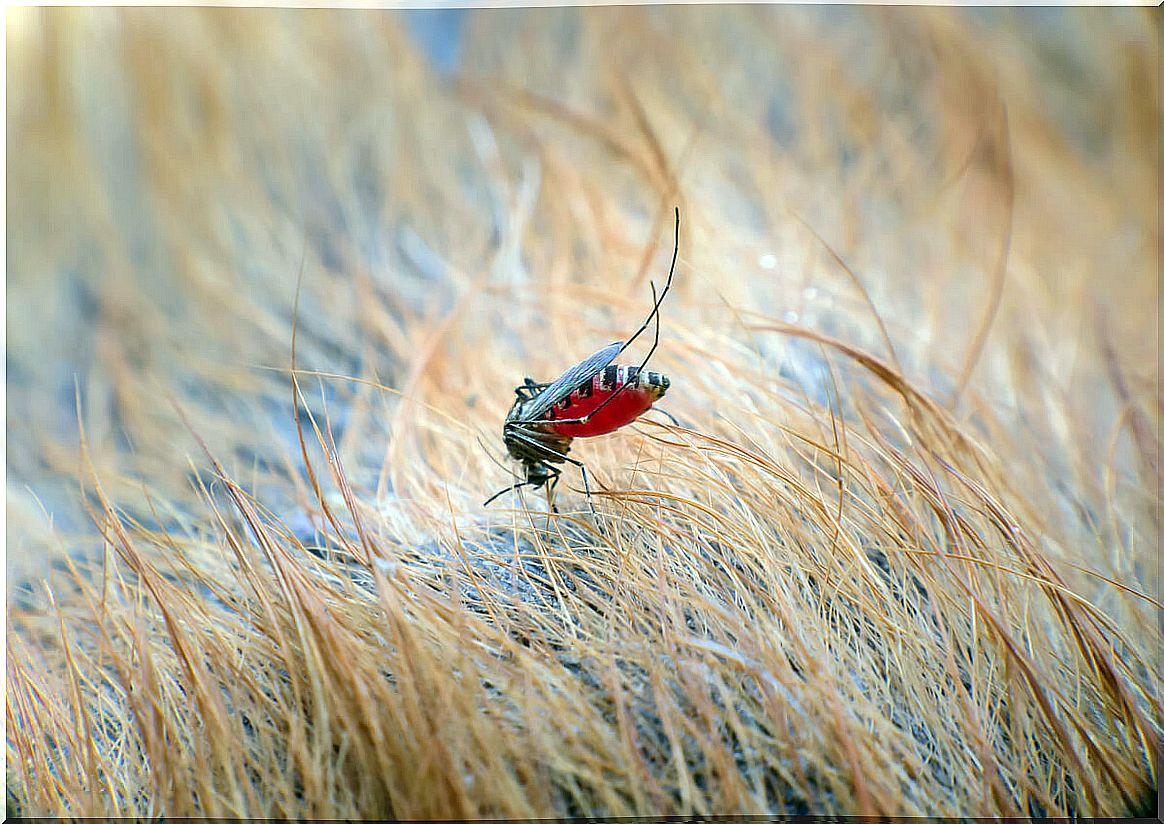Diseases In Dogs Transmitted By Insects

Although it is true that insects are completely necessary for the maintenance of ecosystems, we cannot avoid having something of annoyance at them, especially those that bite, such as mosquitoes, fleas and ticks. Few things are more annoying than enjoying a summer sunset while being bitten by a horde of hungry mosquitoes.
Do you know that many of these insects can bite your dog, despite having so much hair? In addition to itching, they can transmit various pathologies, some of them serious. Read on if you are interested in discovering some of the most common canine diseases transmitted by insects.
Leishmaniasis
Perhaps the most well-known vector disease among dog guardians, so it could not remain in the pipeline when talking about pathologies transmitted by insects.
This disease, caused by a parasitic protozoan of the genus Leishmania , is transmitted by mosquitoes of the genus Phlebotomus through their bite . It mainly affects dogs, but cases have also been reported in cats, ferrets and other animals.
Historically linked to specific climatic zones, due to global warming and changes in ecosystems, it is an expanding disease that has begun to pose a significant risk to human populations, since it has a zoonotic potential (to be transmitted to people).
Currently, there is an effective vaccine for dogs against this disease. In addition, an adequate external antiparasitic treatment on the dog will provide effective protection to prevent infection.

Thelaziosis
It is an eye disease caused by small, whitish nematodes of the genus Thelazia. However, insects play a fundamental role in their transmission, since the larvae of these nematodes are carried by a type of fly, the Phortica variegata.
When this fly feeds on the dog’s eye fluids, it deposits the nematode larvae in the conjunctival sacs.
As scandalous as it is often to observe worms crawling across the eye surface of animals, it does not usually cause a serious disease process. In most cases, the clinical symptoms do not go beyond simple conjunctivitis.
It usually affects dogs with exterior life habits, although other animals, such as humans and cats, can also become infected, but in the latter it is more difficult since the felines usually eat the flies before they do their evil deeds.
Filariasis
Also called heart disease. It is caused by filarial nematodes, which are carried by mosquitoes and flies.
It is in these where the worm evolves to later be injected into the bloodstream of the dog when these insects are feeding. In addition to dogs, it can also infect other animals, including humans, on which it produces the so-called elephantiasis.
In dogs it usually produces effects on the heart, since it is the part where adult nematodes lodge. In this sense, the symptoms of this disease are the following:
- Chronic cough.
- Apathy or intolerance to exercise.
- Shortness of breath
- Anorexy.
In cases where the parasitosis is massive and the number of worms lodged in the heart is high, the life of the animal may be compromised.
Prevention is essential and external antiparasitic treatments are essential in areas where there is a high prevalence of this disease.
Babesiosis
It is not necessary to fly to transmit diseases, and proof of this are ticks, transmitting vectors of this pathology. This infection, caused by protozoa of the genus Babesia , can affect various animals, including dogs and men. It is transmitted by different ticks of the Ixodidae family .
It is a disease that can develop acutely and have serious consequences in dogs, as it can lead to their death if it is not treated in time. The symptoms are varied, but in general it presents with fever, lethargy, reddish urine or vomiting.
The best way to prevent it is to provide the animals with adequate external antiparasitic treatment. Currently, there are very effective treatments on the market in pill, pipette or collar form to deal with tick bites.

Insect prevention considerations
In conclusion, these are some of the many diseases that can be transmitted by insects. Taking into account the seriousness that many of them entail , prevention against the invertebrates that transmit them should be a priority.
For this reason, do not hesitate to go to your veterinarian to receive advice on what products to apply in order to repel insects.
Many of these disease-transmitting vectors have specific habitats, so depending on the geographic location and lifestyle of the dog, it will be necessary to strengthen protection in a specific way.









